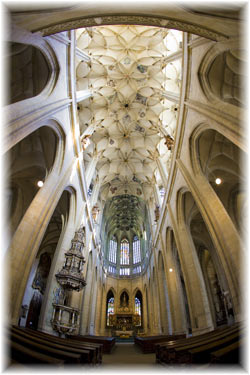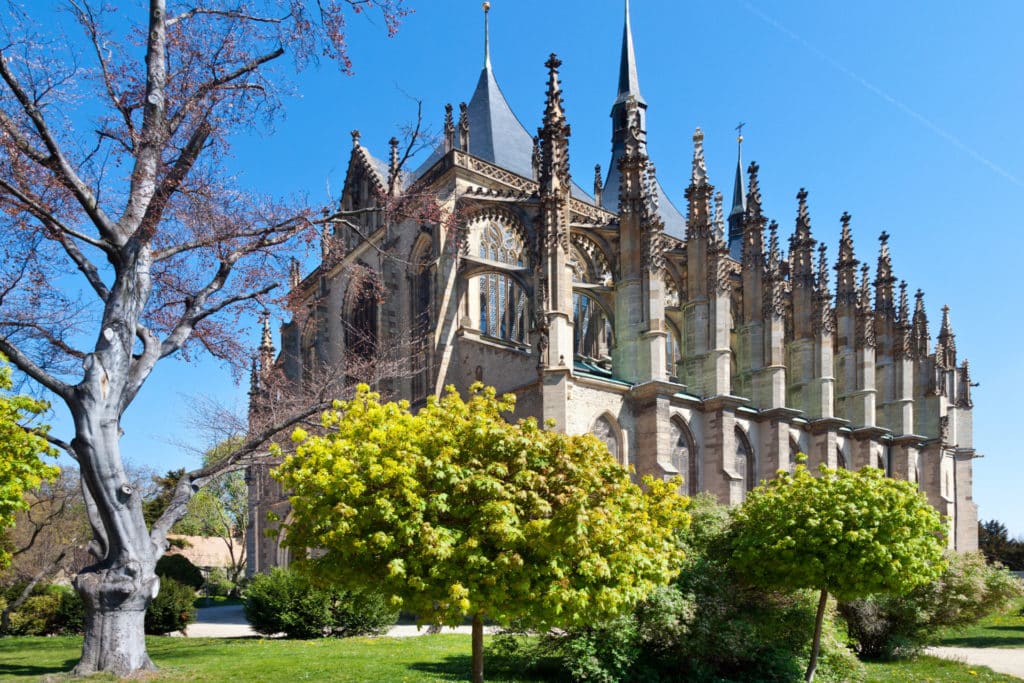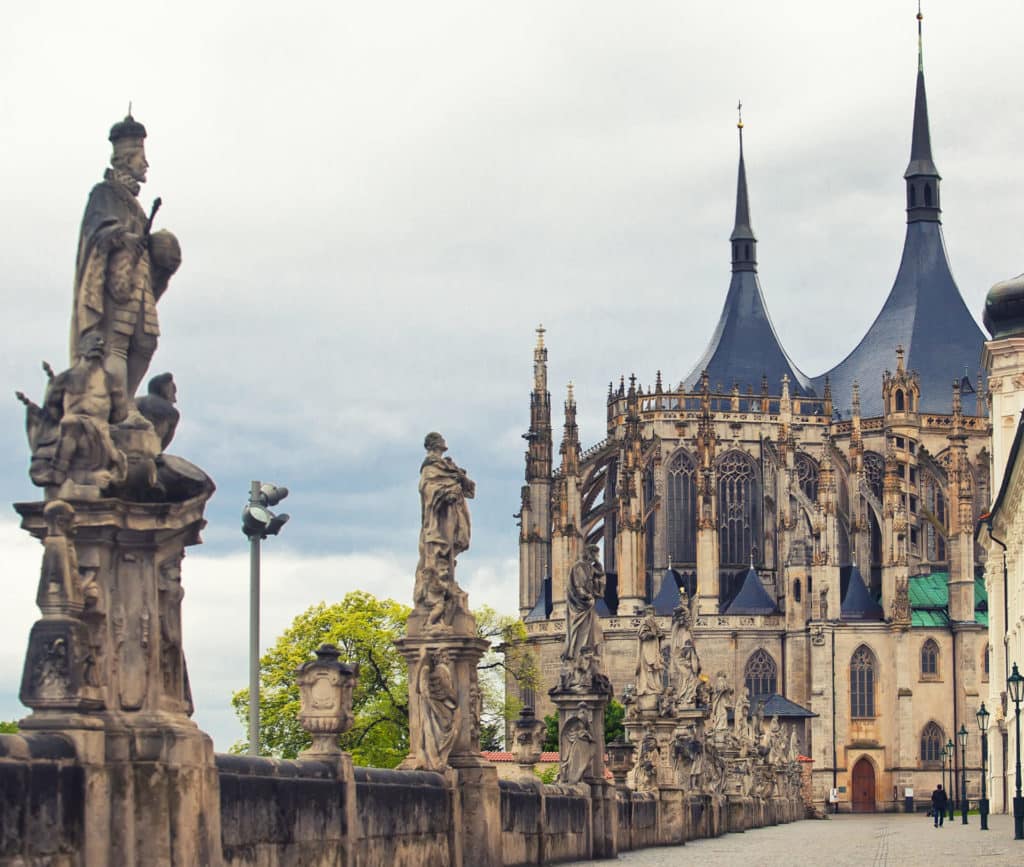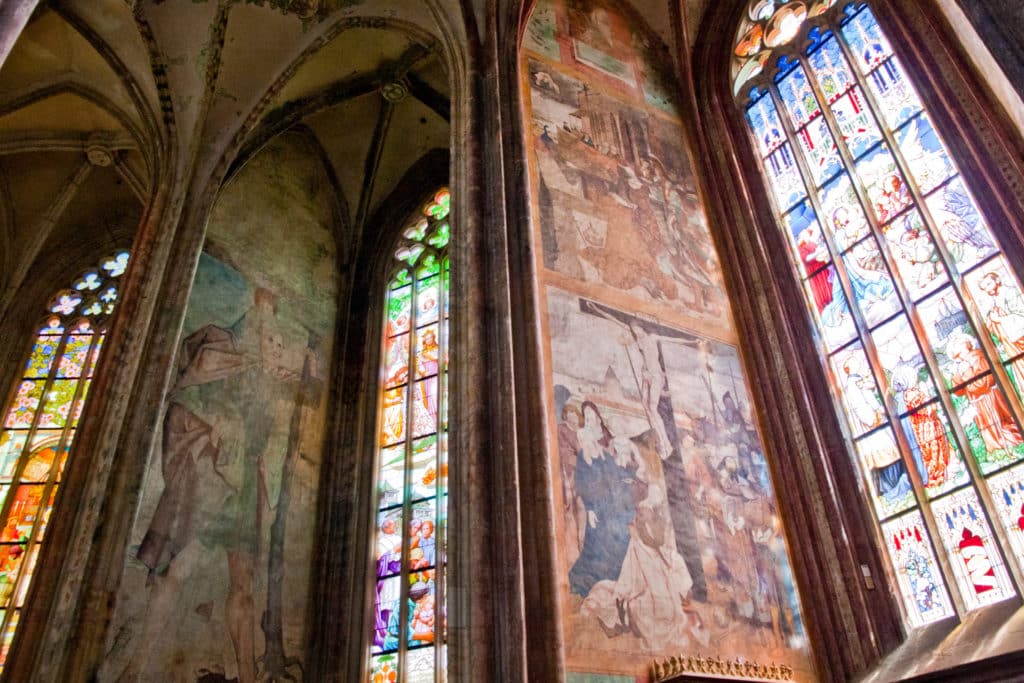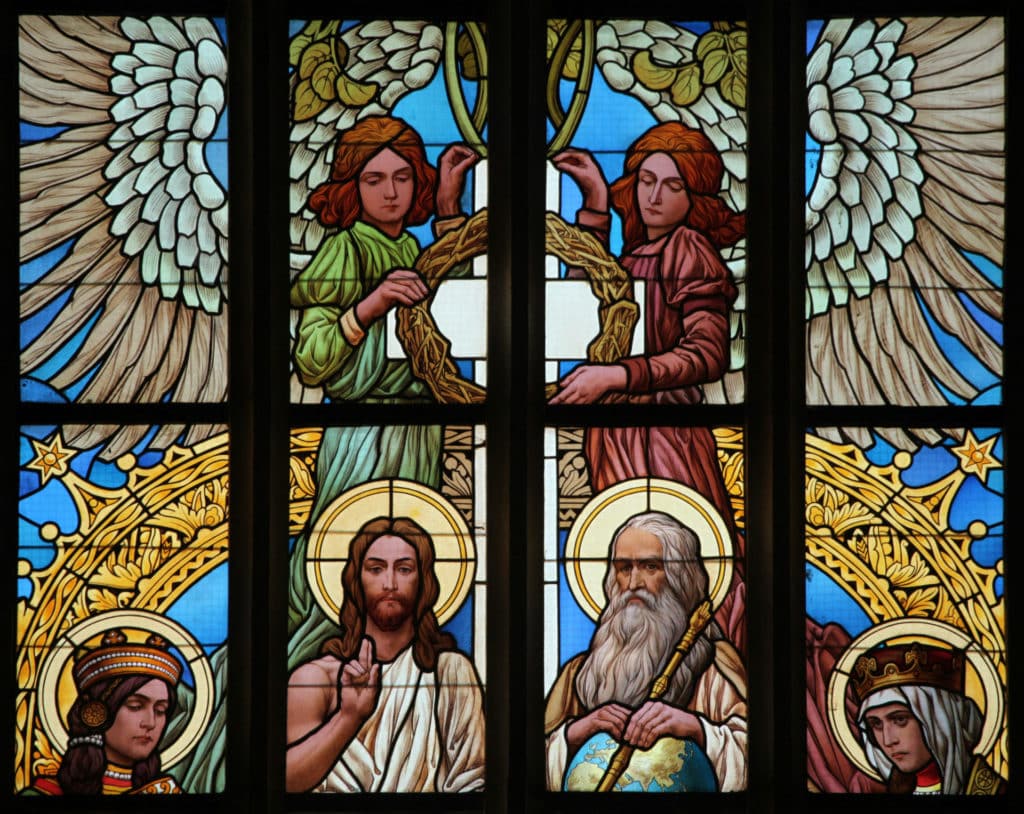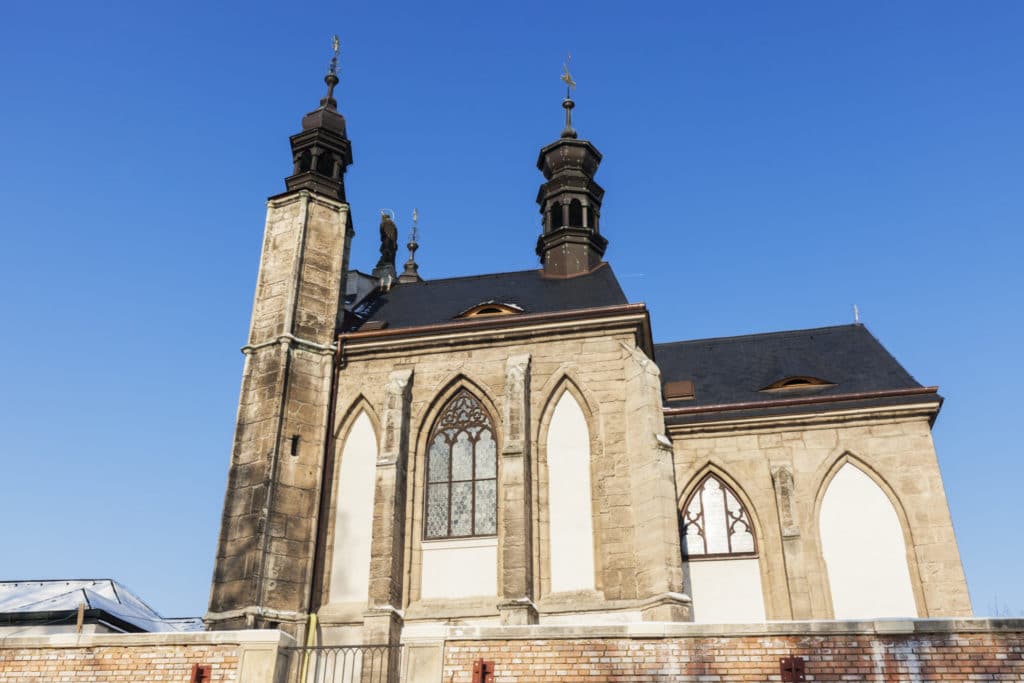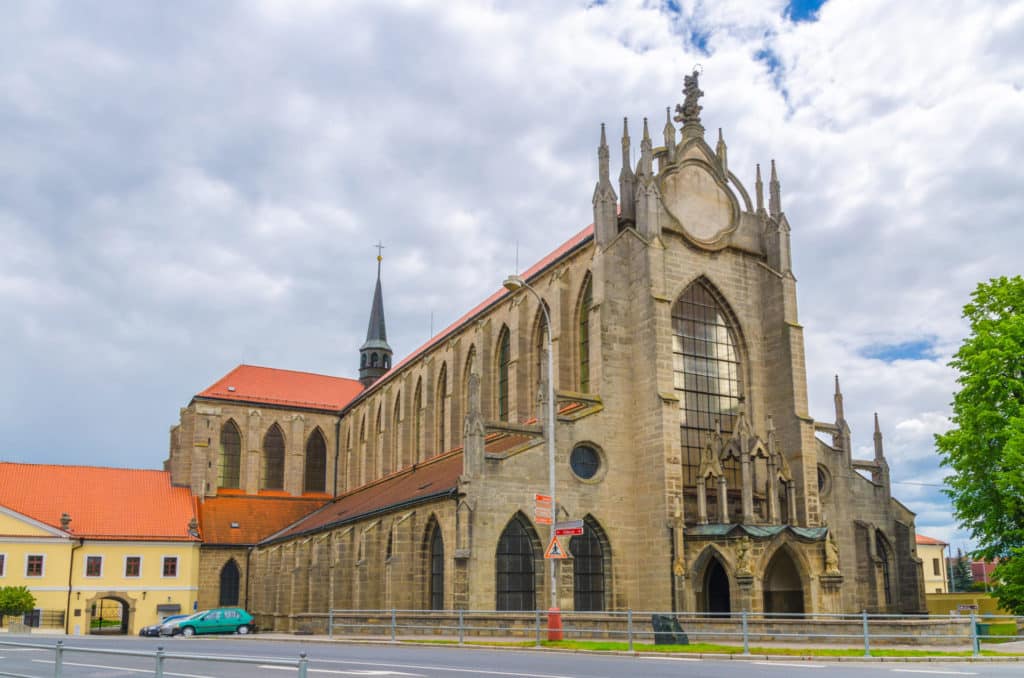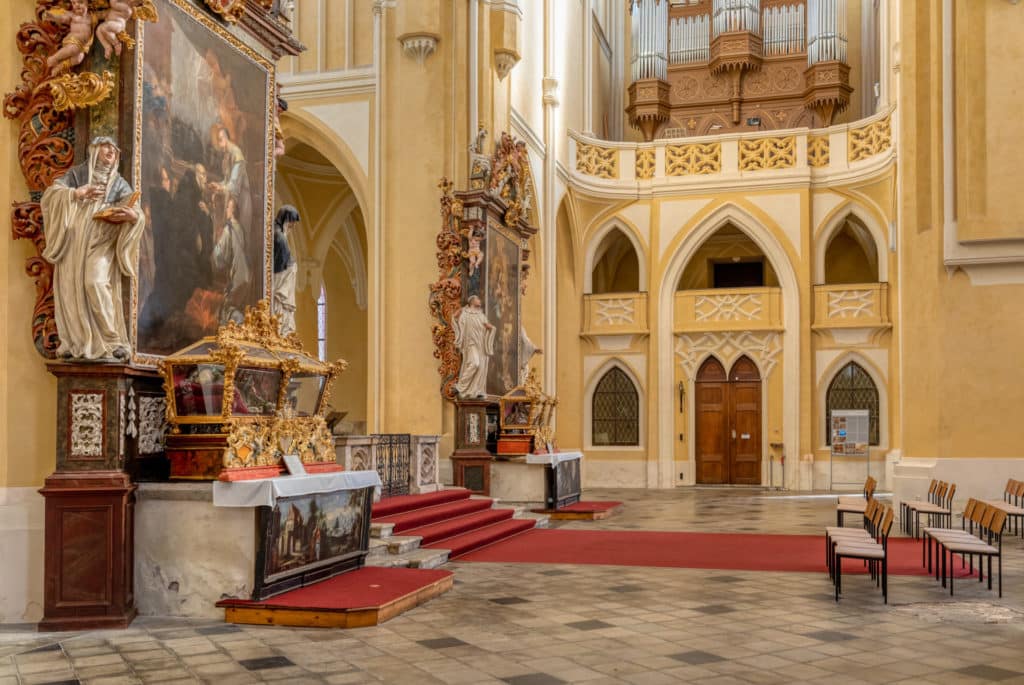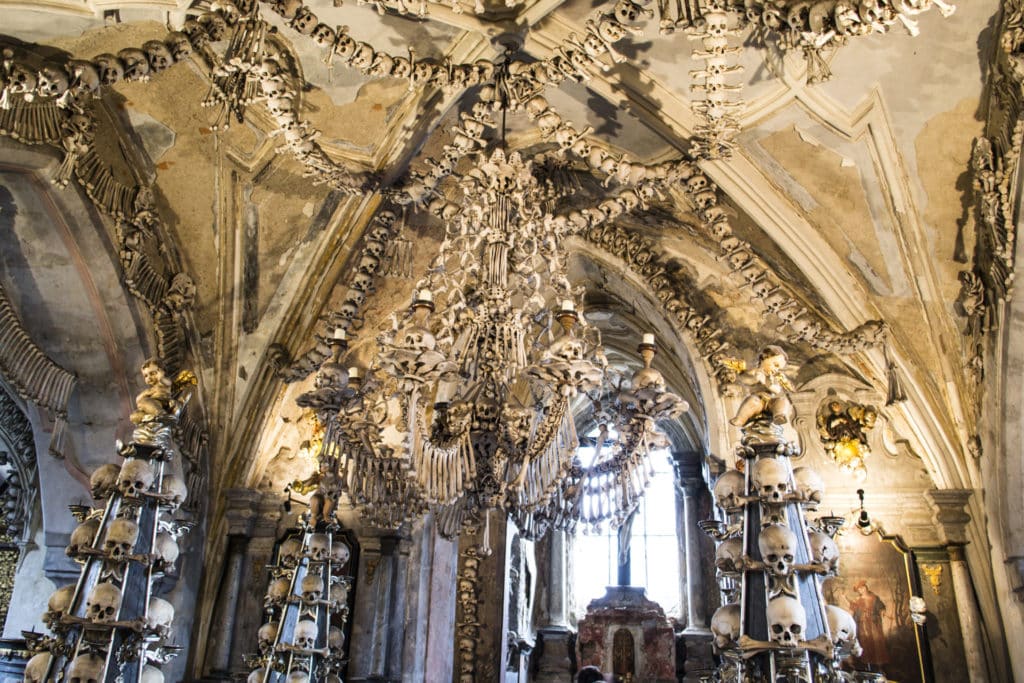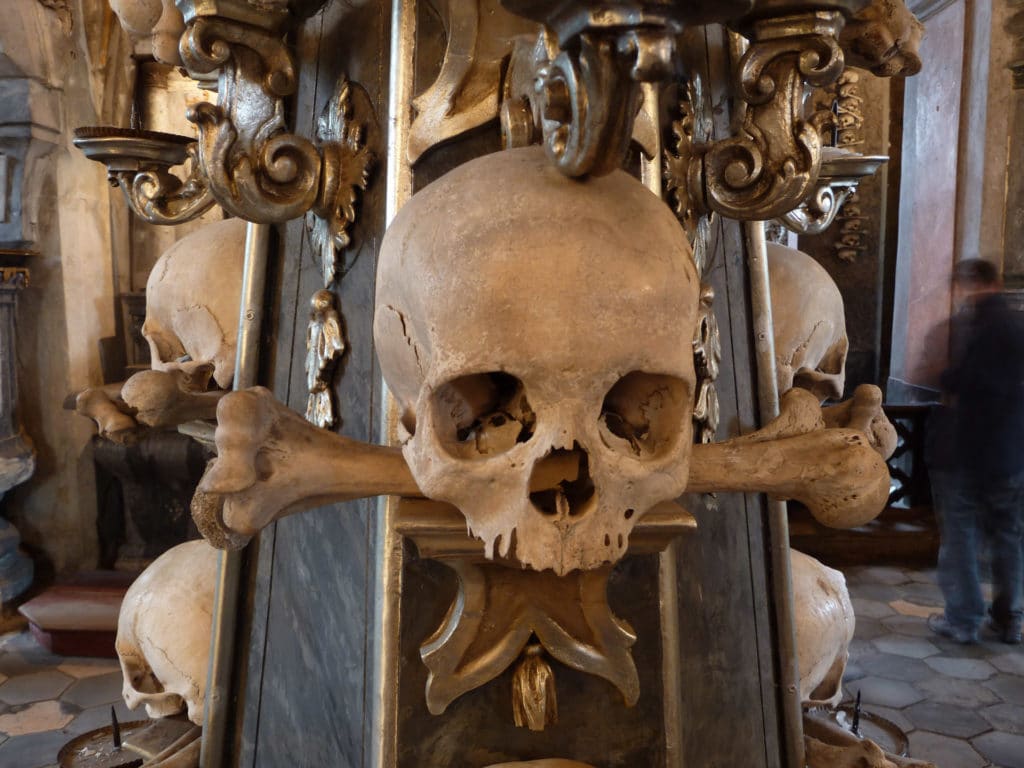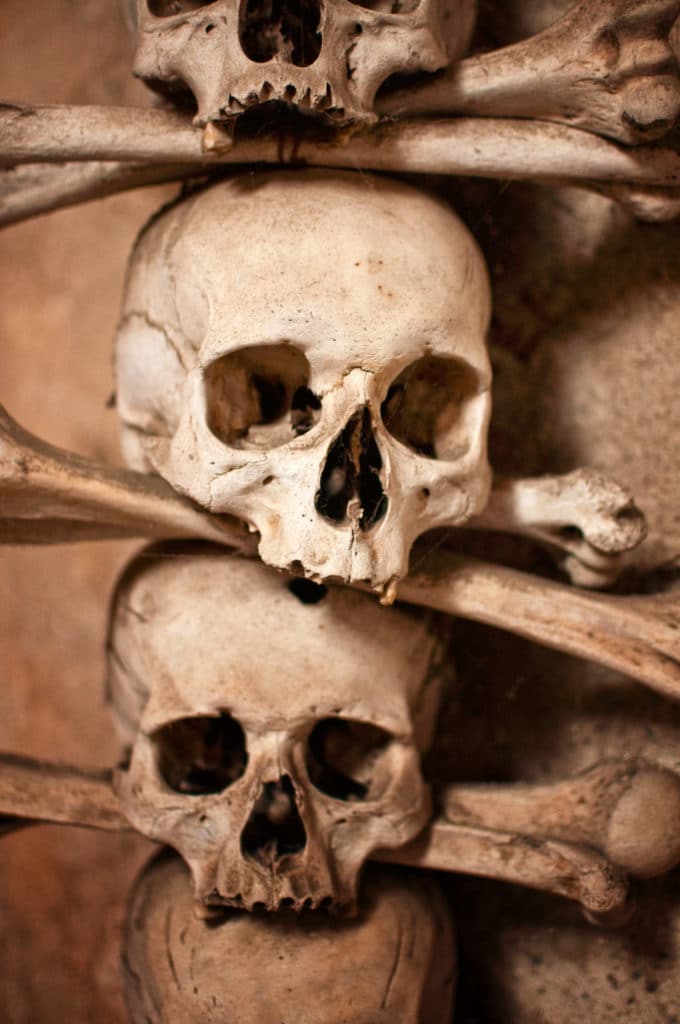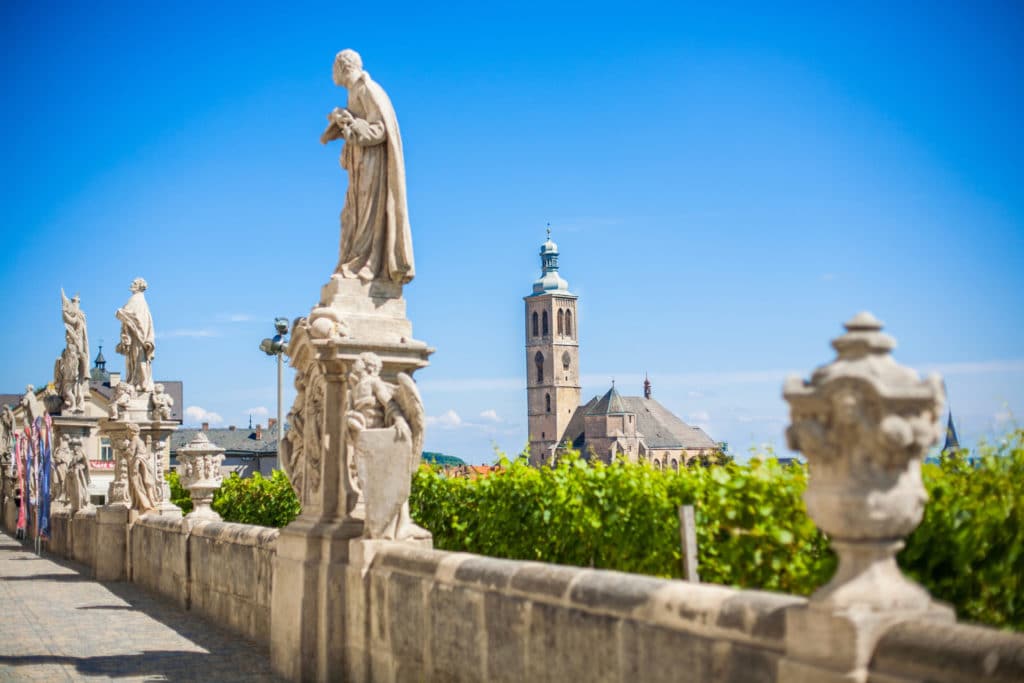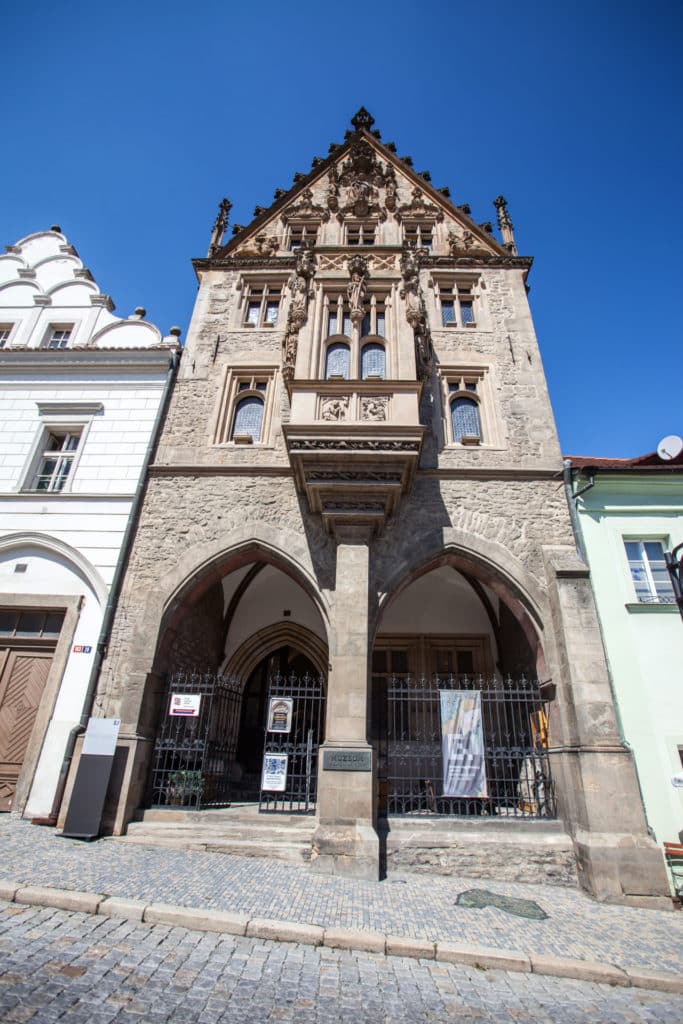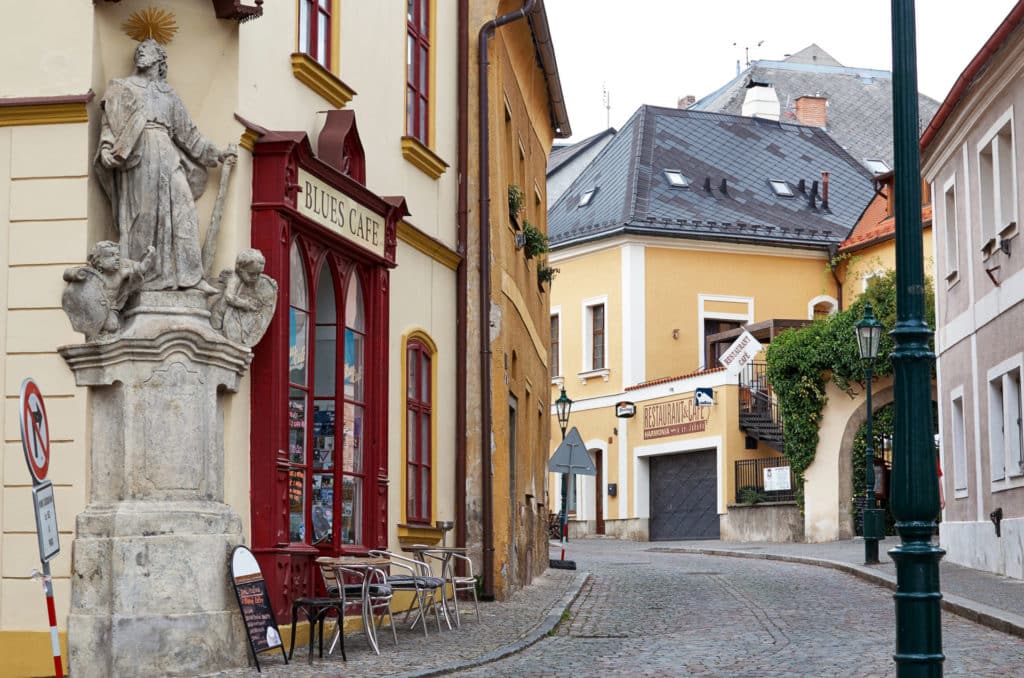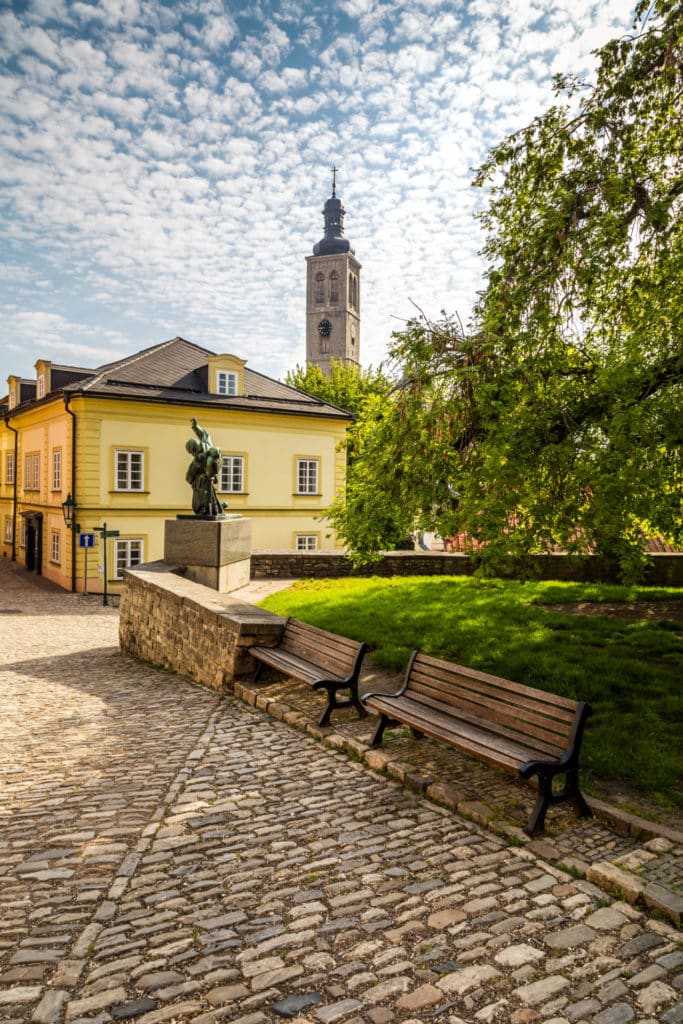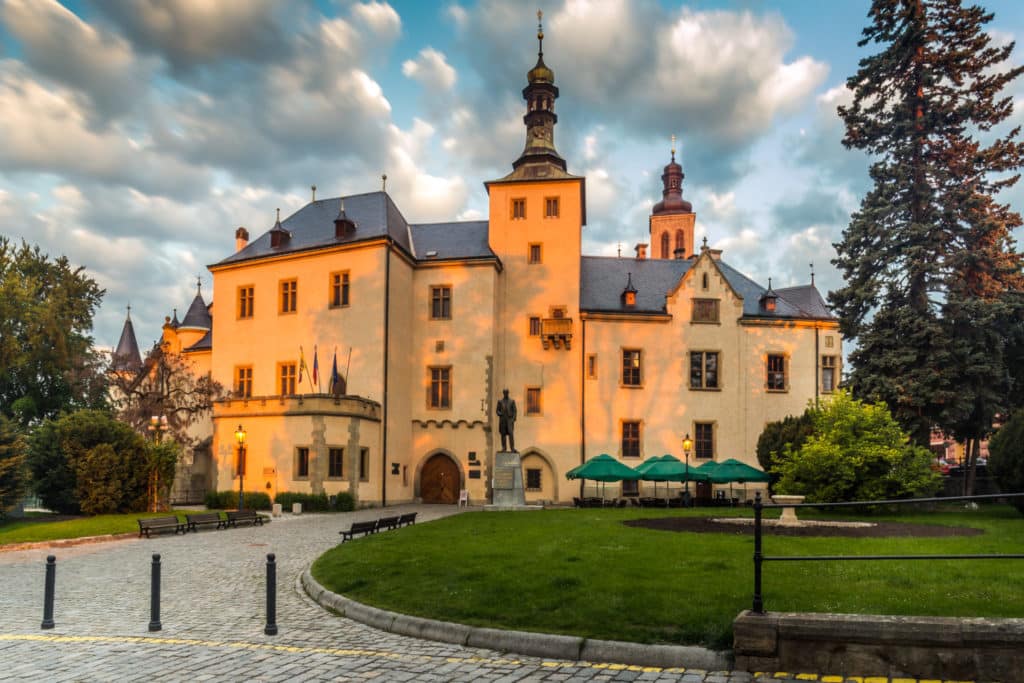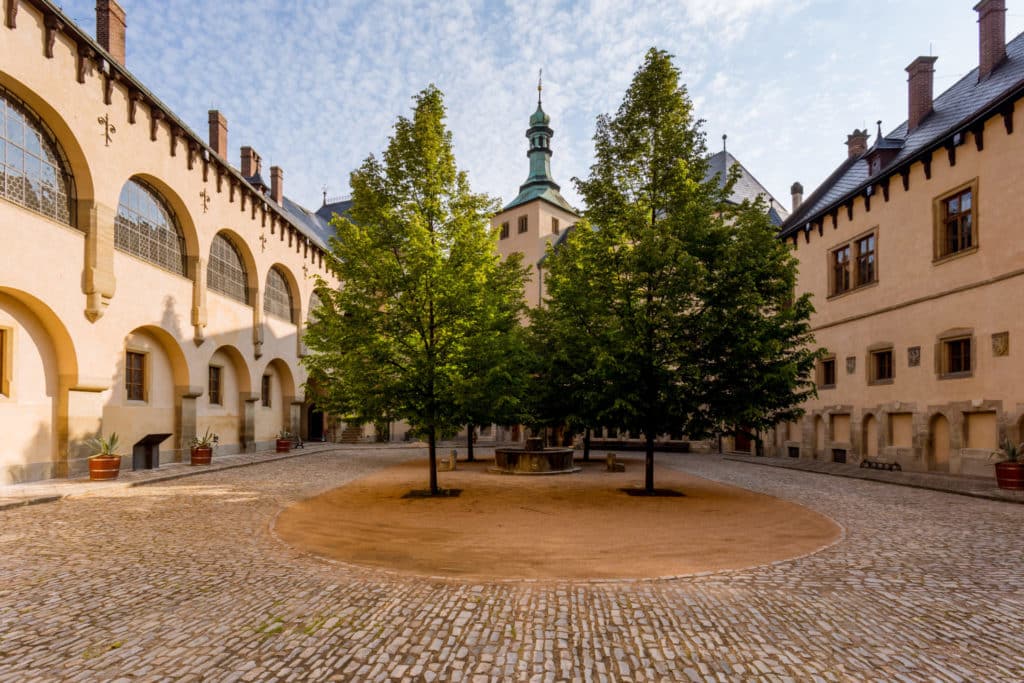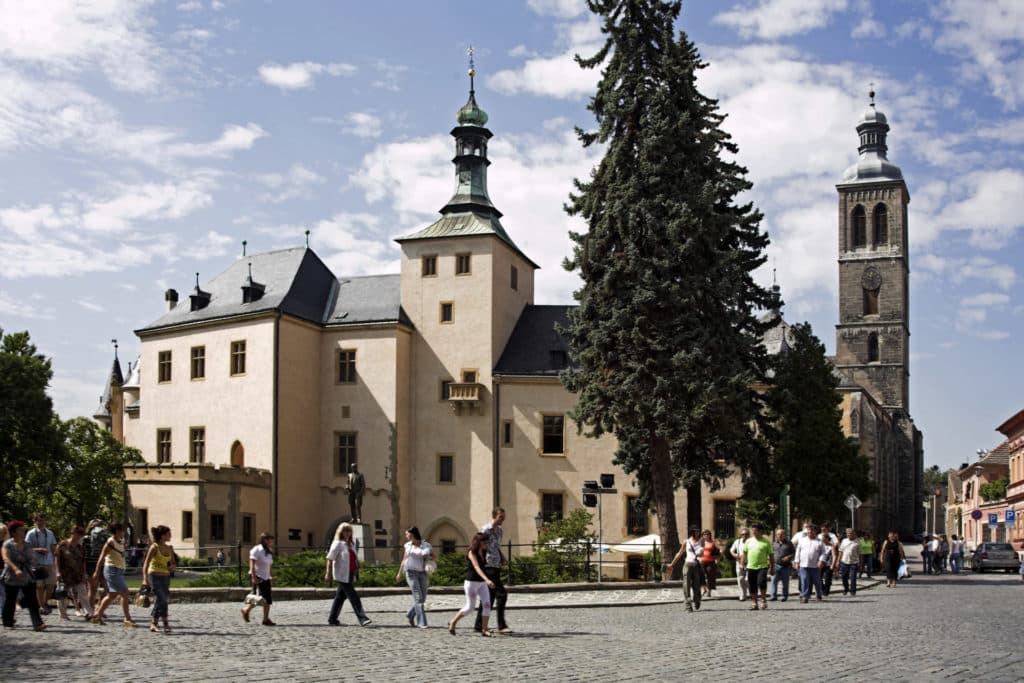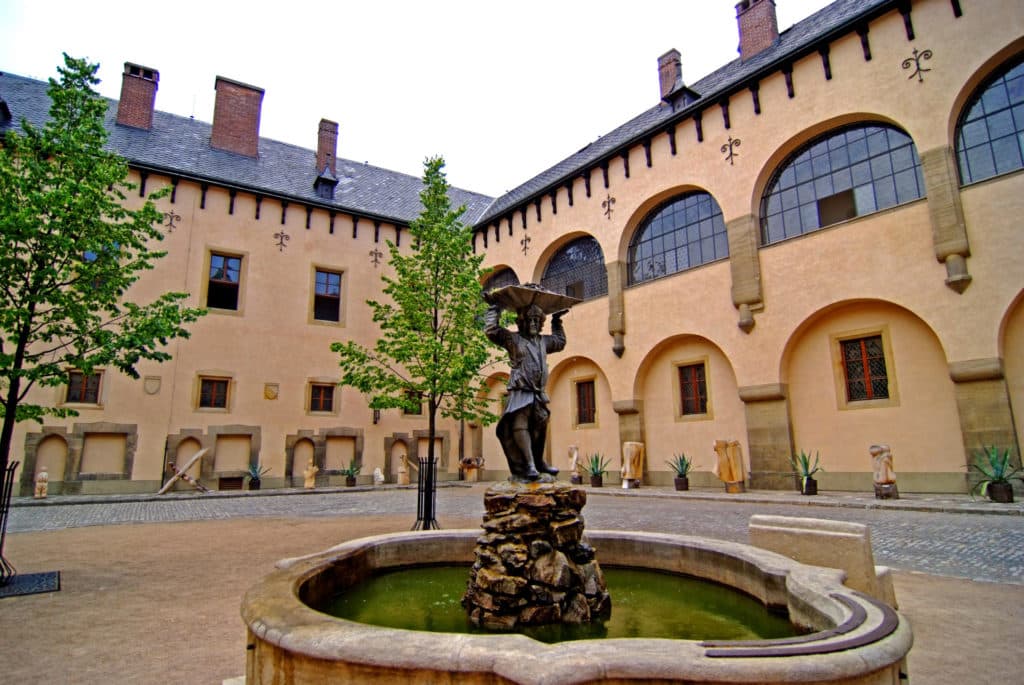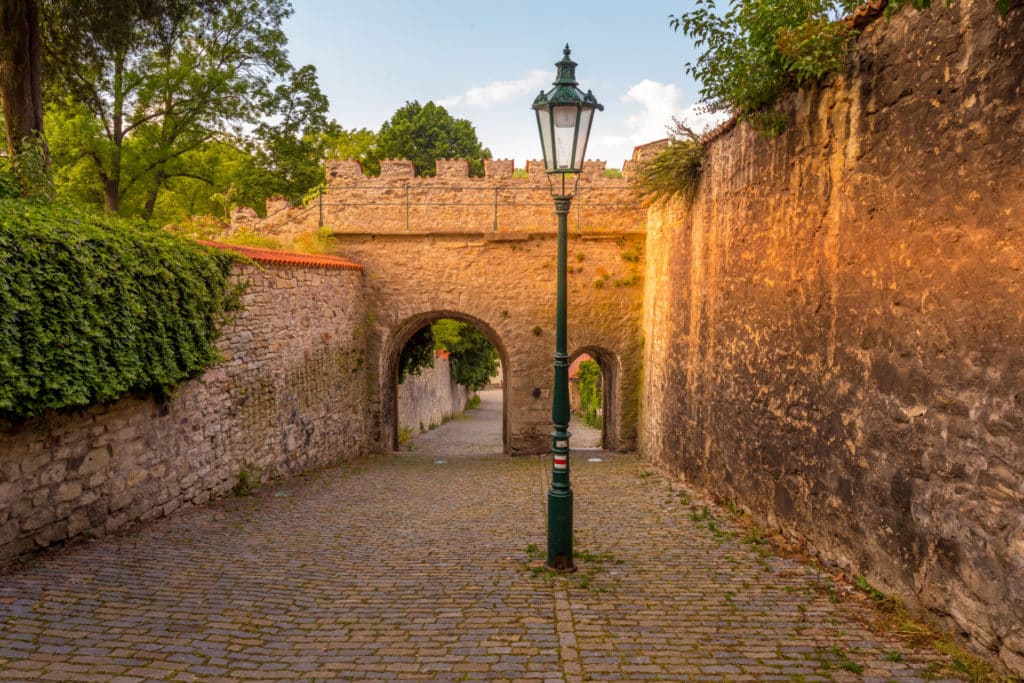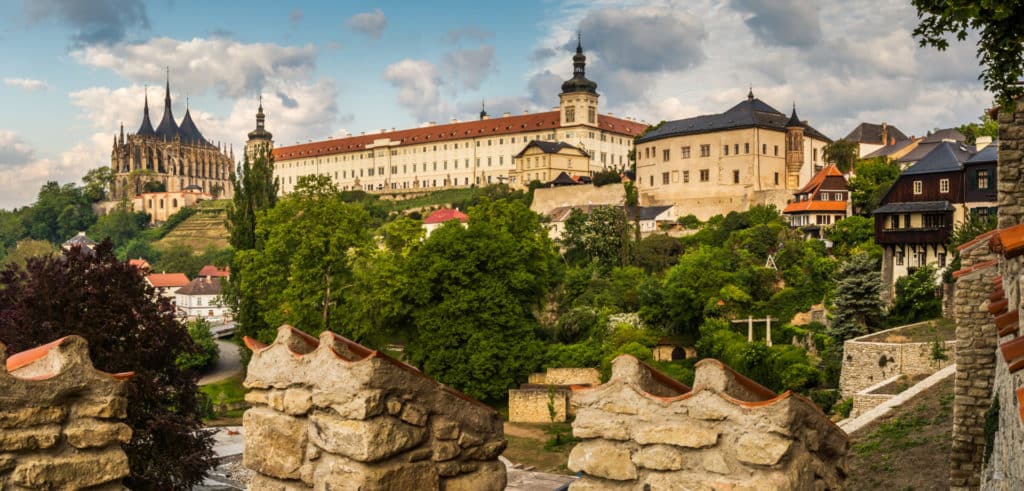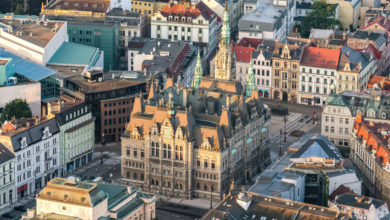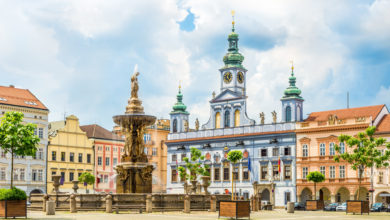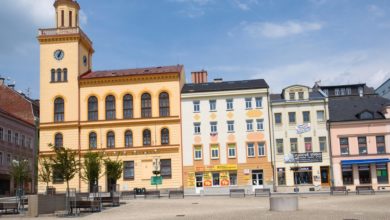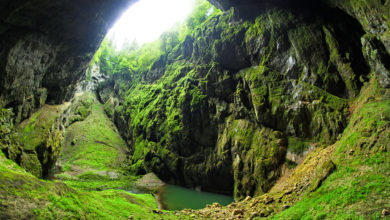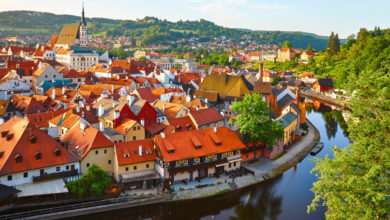Kutná Hora
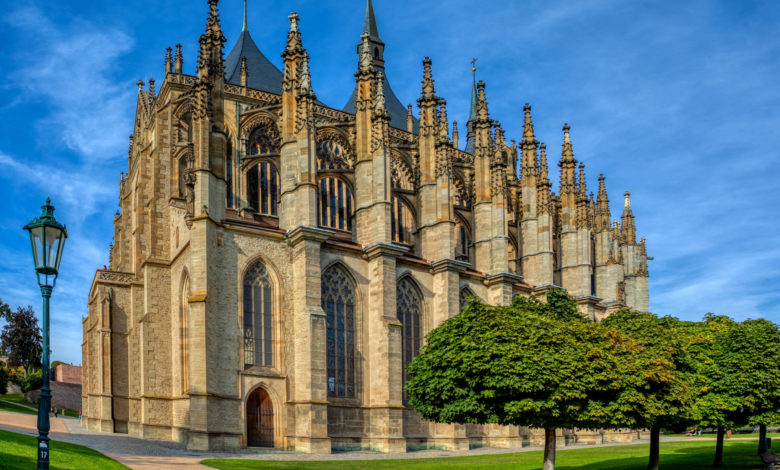
Thanks to its silver mines, which were open for 250 years, Kutná Hora was the second most important town in the Bohemian kingdom after Prague. During the 14th century, its population was equal to that of London‘s.
Today it is just a small provincial town with just over 20.000 people. There are plenty of beautiful Gothic churches to see, such as St. Barbara´s Cathedral (1388 to 1565), one of the most beautiful Czech Gothic buildings, the Italian Court (Vlašský dvůr) with its Royal Mint, where the famous Prague groschen were minted (which at that time represented the hard currency of Central Europe), the Stone House, and the St. James Church etc. In the year 1995, Kutná Hora was declared a world heritage site and has been protected by UNESCO. These days the town benefits from tourists and the Philip Morris tobacco factory. North of Kutná Hora is Sedleč, where, in the 19th century, the Cistercian ossuary was turned into a macabre work of art by František Rint. There are bone monstrances, chandeliers and even a Schwarzenberg coat of arms.
Prague to Kutná Hora Transport. Book comfortable minibus transfer online. English speaking drivers.
What to See
 Ossuary
Ossuary
Cemetery chapel from the end of the 14th century, rebuilt in the baroque style by J.B. Santini. The bones, which have decorated the interior of the chapel since the 16th century, were from the adjoining cemetery. ‘Bone church’ of the Sedleč Ossuary is situated outside of Kutná Hora city centre. If you arrive by train, it is 800m walk south from Kutná Hora’s main train station (adult/concession 50/30 CZK; Open 8 am-6 pm Apr-Sep, 9 am-noon & 1-5 pm Mar & Oct, 9 am-noon & 1-4 pm Nov-Feb). When the Schwarzenberg family purchased Sedleč monastery in 1870, they allowed a local woodcarver to get creative with the bones piled in the crypt for centuries. But this was no piddling little heap of bones: it was the remains of no fewer than 40,000 people. The result was spectacular – garlands of skulls and femurs are strung from the vaulted ceiling like Addams Family Christmas decorations, while in the centre dangles a vast chandelier containing at least one of each bone in the human body. Four giant pyramids of stacked bones squat in each corner of the chapel, and crosses, chalices and monstrances of bone adorn the altar. There’s even a Schwarzenberg coat-of-arms made from bones – note the raven pecking the eyes from the Turk’s head, a grisly motif of the Schwarzenberg family. website
St. Barbara’s Cathedral
A unique example of high and late Gothic architecture. Construction began at the end of the 14thcentury. The cathedral houses a gallery of late Gothic and Renaissance paintings. Admission: 50 CZK, Open: daily 9:00-1&00 in summer, shorter hours off-season.
Italian Court
Originally the central mint where the Prague groschen were produced. It became a temporary seat of the king after reconstruction at the end of the 14thcentury.
Church of St. John of Nepomuk
Late baroque building designed by František Maxmilián Kaňka and built in 1734 – 1754. The remarkable ceiling paintings depict the legend of St. John of Nepomuk. A series of statues called “Czech Heaven” celebrates Czech patron saints.
Christi Chapel
Unfinished Gothic building from the turn of the 15th century, intended as an ossuary. It is one of the few completely preserved examples of High Gothic. The terrace affords an impressive view of the town.
Cathedral of the Assumption
Used to belong to the Cistercians. It is one of the most significant works of Czech Gothic architecture of the 14th century. It was the first cathedral built in Bohemia. Santini gave it its final appearance in the baroque-Gothic style at the beginning of the 18th century.
Sankturinovský House
Originally a Gothic building dating back to the 13th century with a richly decorated chapel. Today, it houses the Information Centre, the Felix Jenewein Gallery and the Museum of Alchemy.
Kačina
Within Kačina, four miles (seven kilometres) northeast of Kutná Hora, is a splendid, neo-classic, route-pedimented château connected to pavilions via sleek colonnades. This sprawling, cream-coloured mass of a building began in 1802 and resided in a big park set out in an Old English style.
Hrádek / Silver Mines
Originally a Gothic palace with courtyard and tower built before the year 1420. Today it houses the exposition of the Czech Silver Museum.
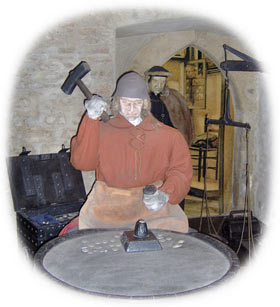
Kutná Hora’s silver lode ensured Prague’s royal purse was wealthy. Certainly, throughout the rule of Charles the fourth, the empire (and his influence) was expanded due to the labour of 100’s who worked in the murky, underground passageways. When you visit this today, you will experience the claustrophobic sense of what is now referred to as the: ‘gallery’. This is a two hundred and seventy five-yard (two hundred and fifty metres) segment of the mines opened up to tourists. Its’ ceiling and walls still harbour gneiss nuggets and quartz, which were included in the rich conglomerates worked by the horses and men who pulled the mining engines during Medieval times. Tiny stalactites—sediments with calcite in them—hang from the roof in areas. This is due to the gradual leaching of the minerals. Nonetheless, this process is far more noticeable in the caves of the Moravian karst in the eastern province of the Czech Republic. Admission: 110 CZK, Open: April-Oct Tue-Sun 10:00-18:00, closed Mon and Nov-March, tours generally every half-hour, www.cms-kh.cz.
Art Gallery of the Central Bohemian Region
This is a recent addition to the town and is found just to the left as you make your way out of the cathedral. It used to be a Baroque Jesuit College but is now home to the second largest space for exhibitions in the whole of the Czech Republic, second only to the National Gallery in Prague. The exhibits you’ll find in this space are changing all the time, but it is always full of important art pieces from the 20th and 21st centuries.
One of the main talking points of this building is the statues found outside. They are all of the saints and are obviously connected to the fact that Jesuits previously inhabited this building. In fact, they were the occupants of this building all the way back in 1626, when they came to attempt to convert the citizens back to the Catholic religion once again. The statues bear a remarkable similarity to those on the Charles Bridge in Prague, and this is because both sets of statues were made as propaganda for the Counter-Reformation movement. Should you wish to visit, you can buy a combo ticket for 120 CZK, granting access to all of the exhibits here.
Address: Barborská 53; Open: 10 am-6 pm from Tuesday to Friday. www.gask.cz
Stone Fountain (Kamenna Kasna)
Kutna Hora has, for a long time, been home to much of the country’s mining, and, as such, obtaining clean drinking water was a real struggle for the population. To solve this problem, an intricate system of pipes was created to bring water to the town, which ran into large storage tanks to ensure that water was always available. In the 15th century, the Stone Fountain was built over one of these tanks by the architect Rejsek, and its Gothic style came to be one of the centrepieces of the town. It is now found on Rejskovo Namesti – it no longer works but can still be seen in the same form it took when it was originally built.
Stone House (Kamenný Dům)
This building was built by Polish artisans and was considered a true marvel of their craft at the time of building. The elaborate masonry of the grape leaves climbing up the building, and the animals dotted around the façade are an absolute wonder to behold and are something that every fan of both architecture and art should witness. The other offering at this house – the museum of local arts and crafts – is rather boring, though, so this can be skipped to save money. It’s open from 10 am-5 pm every day, and more information can be found at www.cms-kh.cz.
Alchemy Museum (Muzeum Alchymie)
This is the only museum in the whole of the Czech Republic dedicated to the ancient art of alchemy, and it is located in the cellars of a house on the Main Square. As you might expect, everything here is dedicated to alchemy. For English speaking visitors, there are many different descriptions written in English, all of which explain the different facets of this practice. There is also a stunning Gothic tower attached to this house, and inside you’ll find an alchemist’s study, which is laid out in the same way you’d have seen it back when the alchemist practised here many years ago.
The Alchemy Museum is open between 9 am and 6 pm during April-September, and from 9 am until 5 pm between October and March. Entry is 60 CZK.
If you wish to explore Kutná Hora, we recommend you do it on either a private or shared excursion as a day-trip from Prague. A private excursion gives you full flexibility: you can choose the departure time, the length of your stay at your destination, the possibility of changes (if you decide to stay longer or shorter), and choosing either to have an experienced guide in your native language or just a driver providing basic knowledge and recommendations about the place. While shared excursions offer less flexibility, they depart at scheduled times and days with a fixed programme – the price is favourable and includes all fees. See more information on our website.
Where to Eat
Pivnice Dačický
Get some froth on your moustache at this old-fashioned, wood-panelled Bohemian beer hall, where you can dine on dumplings and choose from five different draught beers, including Pilsner Urquell Budvar and Primátor yeast beer. Address: Rakova 8; main dishes 120-350 CZK; Open 11am-11pm. website
Dobrá Čajovna
This is a small teahouse with a difference, as it is not in keeping with this town’s medieval vibe. Instead, it is Thai themed, with loads of character and quaint Thai decorations adorning every wall. It’s a fantastic place to come if you want to while away the day in a comfortable location, watching the locals go about their daily business. It’s open every day between 2 pm and 10 pm and is located on Jungmannovo Náměstí 16.
U Žlutého Kola (Donna)
This is the best place to find traditional Czech dishes in the whole of the town, although this means that it is usually rather busy at the same time. There is a menu in English; however, the lunchtime specials are only found in Czech, although one of the waiters will explain them to you. It also has a lovely little courtyard, where you can sit when the sun is shining. It’s open every day, and lunch specials are served until 3 pm. It’s located above the Hotel Garni on Havlíčkovo Náměstí no. 16.
This Italian restaurant can annoy some with its English language advertising, but it is located right in the Main Square of the town and draws a big crowd. The food is good here, and the customers are loyal. It is open every single day and, as already stated, is on the Palackého náměstí 90. website
U Sňeka Pohodáře
Kutná Hora’s best Italian restaurant. Main dishes 100-240 CZK. Address: Vladislavova 11.
Getting There
Kutná Hora is situated 65 km east of Prague. By bus 70 minutes from Florenc station, train 55 minutes from the main station (the train is a better choice). Return tickets for train or bus cost around 200 CZK. If you don’t want to spend use public transport, consider booking an excursion.
Tourist Information
The information centre is on Palackého Náměstí, housed in the same building as the Alchemy Museum. Open: April-Sept daily 9:00-18:00; Out March Mon-Fri 9:00-17:00, Sat-Sun 9:00-16:00; www.kutnahora.cz.

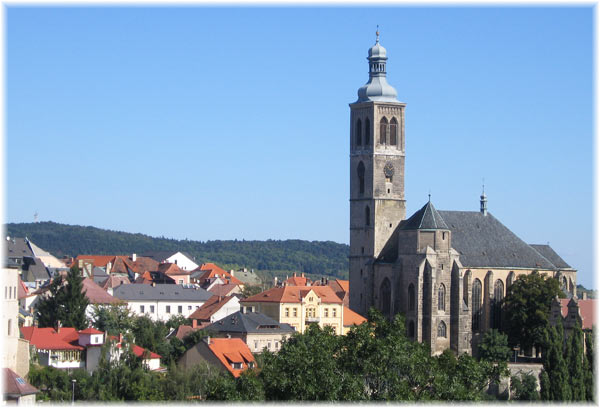
 Ossuary
Ossuary